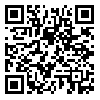1. Alizadeh Zavarom, A & Naji Azimi, Z (2015). Determine the right combination of crops on a farm scale using fuzzy goal programming model. Agricultural Economics and Development. 29. PP 294-307
2. Azar, A & Amini, M.R & Ahmadi, P. (2014). Applying Fuzzy Goal Programming in University Budgeting. Quarterly Journal of Research and Planning in Higher Education. 20 (2). PP 1-24
3. Azar, A & Faraji, H (2010). Fuzzy Management Science. Tehran. Mehraban nashr
4. Bakhtiyari, H (2006). Effective ways of banks' liquidity management. Quarterly auditor. 1 (8). PP 86-94
5. Divandari, A & Karoloks & Mosavi, S.R (2004). ). Designing Of liquidity management Forecasting Model in Financial institutions in Usury- free banking framwork using artificial neural networks. Management Message. 11 & 12. PP 23-58
6. Fabozzi, Frank J & Modigliani, Franco& Jones, Frank J & Ferri, Michael G. (2002). Foundations of financial markets and institutions. Boston, MA: Prentice Hall / Pearson. xxiii, 695 p.
7. Giokas, D & Vassiloglou, M. (1991). A goal programming model for bank assets and liabilities management. European Journal of Operational Research .50(1) .PP 48-60. [
DOI:10.1016/0377-2217(91)90038-W]
8. Independent audit report And legal inspector as well as the Financial Statements Group and Bank for 2009-2014, Mellat Bank. http://www.bankmellat.ir
9. Islami bidgoli, G.R & Mehregan, M.R & Golami, P. (2011). Optimal management of assets in banks using fuzzy AHP and goal programming: case study in Bank A (85-87 years). Financial engineering and management of securities. 3 (9). PP 23-44
10. Ismal, Rifki. (2010). Strengthening and improving the liquidity management in Islamic banking. Humanomics. 26(1). PP 18-35 [
DOI:10.1108/08288661011024977]
11. Kosmidou, Kyriaki & Zopounidis, Constantin (2004)، Goal programming techniques for bank asset liability management. Springer Science & Business Media.
12. Lin, Chang-Chun & Liu, Yi-Ting & Chen, An-Pin. (2016). Hedging an option portfolio with minimum transaction lots: A fuzzy goal programming problem. Applied Soft Computing. 47. PP 295-303. [
DOI:10.1016/j.asoc.2016.06.006]
13. Lin, Chang-Chun. (2004). A weighted max–min model for fuzzy goal programming. Fuzzy Sets and Systems، 142(3)، PP 407-420 [
DOI:10.1016/S0165-0114(03)00092-7]
14. Memariani, A (1999). Fuzzy goal programming methods. Knowledge Management. P46.
15. Pourzarandi, M.E & Omrani, M & Kavand, M (2012). Designing an Model of Measurement of liquidity risk in the banking system (Case study:Mellat Bank). biquarterly journal of iran's economic essays. 9(18). PP 135-163
16. SHaabani, A & Adel Rastkhiz, A (2014). Comparative analysis of risks in conventional banking and in Usury- free banking In the framework of Islamic contracts. biquarterly journal of Financial - Islamic research. 2(3). PP 5-36
17. Sori, D & Vesal, M (2008). ). New methods of financing and liquidity management in banks. The Nineteenth Conference of Islamic banking. Institute of Higher Education Iran Banking.
18. Studies and risk control department, Tejarat Bank (2007), Risk Management in Banking, Tehran: Tejarat Bank.
19. Studies and Risk Management Group, NE Bank (2008). Asset liability management and liquidity risk in financial institutions. Tehran Publication Fraskhn. P 171
20. Tektas, Arzu & Nur Ozkan-Gunay, E & Gunay, Gokhan. (2005). Asset and liability management in financial crisis. The Journal of Risk Finance. 6(2). PP 135-149 [
DOI:10.1108/15265940510585806]









